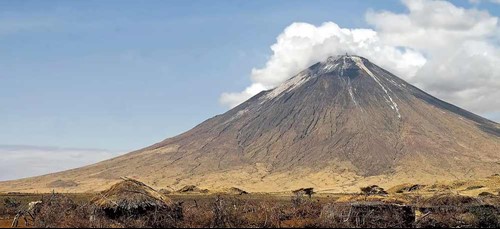About Tanzania
| Geography | Climate | Migration | Culture | Laws |
Geography of Tanzania
Tanzania is bordered by Kenya and Uganda to the north, Rwanda, Burundi and the Democratic Republic of the Congo to the west, and Zambia, Malawi and Mozambique to the south. It eastern border lies on the Indian Ocean. It is about the same size as Nigeria (945,000 sq km). The country used to be called Tanganyika under British colonial rule but changed to Tanzania in 1961 after independence. The country then united with Zanzibar to become the United Republic of Tanzania under the first President Julius Nyerere.
The capital is Dodoma, although the coastal city of Dar es Salaam remains the principal city; and with more than 127 ethnic groups, each with its own language, Swahili is the official language although English is widely spoken.
Geologically, the northeast of Tanzania has a number of volcanoes which appeared in the Great Rift Valley - Kilimanjaro, Meru and Oldonyo Lengai are the most famous ones - while to the northwest are the great lakes of Victoria (Africa's largest) and Tanganyika (Africa's deepest). The central area of the country is a large plateau of plains and arable land, while the eastern shores are hot and humid.
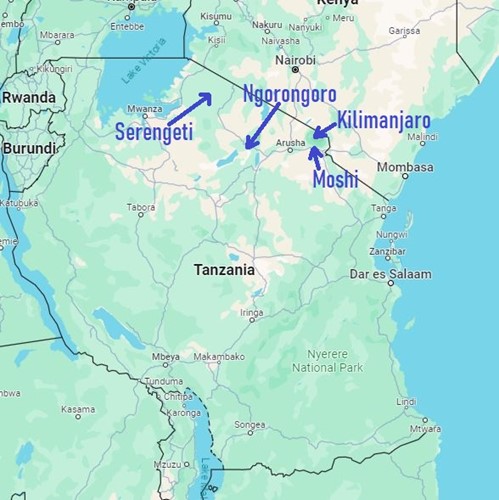
Climate in Tanzania
Tanzania is a large nation and has a varied equatorial climate. Overall the climate is tropical, with hot and humid coastal areas while the northwestern highlands are cool and temperate. In the highlands of the northeast temperatures range between 10C and 20C while the rest of the country rarely drops below 20C. Generally the hottest period of the year is November to February and the coolest period from May to August.
Rainfall
Tanzania also has two rainy seasons in the northern and eastern regions, the short and long rains. The short rains known as Vuli happen from October to December, while the long rains known as Masika are from March until June. In southern, central and western parts of the country there is only one rainy season between December and April.
Global climate change has blurred the traditional dates of the rainy seasons, which has an impact on climbing Kilimanjaro, because clearly the best times to attempt a summit would be during the dry periods from June to October. Nowadays however there can still be rains in July and longer rains can start early in September.
For up-to-date weather information on the mountain you can check out snow-forecast.com or see our Climate Information Page.
Temperatures
The warm Tanzania climate lasts from mid-December to March, roughly corresponding with the rainy period of the south, west, and central region of the country. From June to October, it is generally colder and drier across the country. Temperatures on Mount Kilimanjaro and Mount Meru drop below freezing at night.
Knowing the temperature and climate during the month in which you want to climb Kilimanjaro is clearly of great importance in preparing for Kilimanjaro and in particular your Kilimanjaro packing list.
Annual Weather Patterns
- January - February: Dry summer season, dry.
- March – May: Long rainy season with high humidity, heavy downpours in the afternoons and daily temperatures just below 30°C.
- June – October: Dry season. Temperatures vary with altitude and location, but usually fine clear skies and sunny weather.
- November – December: Short rains, mostly daily thunderstorms, becoming dry and warm at the end of the year.
Migration Seasons in Tanzania
November - December
This is the beginning of the short rains in Tanzania’s North. In late this period, the herds of wildebeest arrive on the plains of the Serengeti from the Mara and then continue to migrate further South spreading across the plains.
January - March
The animals are now settled in the South and East of the Serengeti; the South of Seronera around Ndutu area and includes the North of the Ngorongoro Conservation. This is the calving season where most wildebeest calves are born in the window around February.
April - May
Gradually the animals begin to migrate Northwards seeking fresh grazing water. The area around Moru Kopjes and west of Seronera is then hectic with the might movement of hundreds of thousands of wildebeest and including the Thomson Gazelles and zebra. Some of the migration then head due north of Seronera, but most are usually further west.
June
The wildebeest migration slows down around the Grumeti River in the Western Corridor, concentrating here. The river here is normally a series of pools and channels, but it's not continuous – and so whilst they always represent an annual feast for the Grumeti River's large crocodiles, these aren't usually quite as spectacular as the crossings of the Mara River, further north.
July - October
They migrate towards Northeast Serengeti (Bologonja and Ikorongo and Ikoma Game Reserve) to Maasai Mara in Kenya.Only those animals (excluding predators) which can stand without surface water for long periods and adapted to the poor forage remain there. The biggest and the most demanding task for the animals is when they have to cross Mara Rivers in the North. Many animals drown or get caught and eaten by the crocodiles whilst lions await them on the other side.
November
When the pasture has been exhausted in the North and Maasai Mara, this army of animals surges back to the now green pastures of the Serengeti North and continue to migrate South…and the cycle begins all over again…
Serengeti Seasons:
Early Wet Season – December to April (February is the calving season)
Late Wet Season – April to June
Early dry Season –July to October
Late dry Season – October to December
Tanzania Culture
Tanzania is formerly known as Tanganyika, a name that was given to the country by a British civil servant in the early 1920’s (Tanga meaning sail and Nyika meaning arid plain). The previously known German East Africa became known as Tanganyika Territory. In 1964, Tanganyika was joined with Zanzibar and other offshore islands to become what is known as today: United Republic of Tanzania.
Architecture of Tanzania
Being a former colony of both Germany and Britain, architectural styles in Tanzania reflect Arab, German, and British influence and occupation. There is also a long rich history of slave trade and other goods that can be seen in the architectural remains and buildings of the coastal towns and Zanzibar Island (The Portuguese, Arabs and Indians and Chinese were also involved in this trade). For instance, ruins of Arab mosques as well as nineteenth-century stone houses on narrow streets can be seen in Bagamoyo, which was one of the main endpoints of the East African slave trade. There are also tombs embedded with Chinese ceramics dating to the twelfth century.
Suburban dwellings include the Swahili house, a rectangular structure made of either stone with a corrugated roof or earth on a wooden frame with a thatch roof. This type of house is found all along the coast and was strongly influenced by Indo-Persian culture during the 13th and 14th centuries.
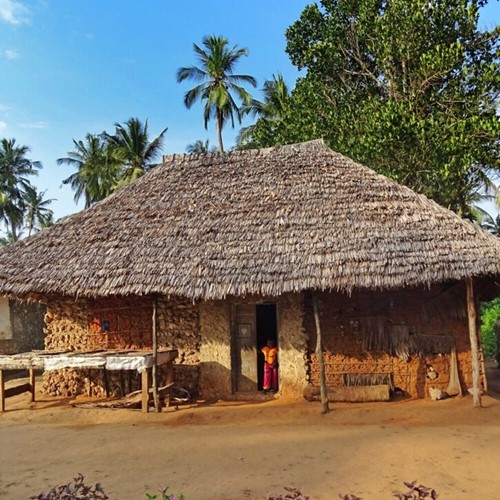
National Identity of Tanzania
Tanzania has a harmonious national culture that is based on a subtle but strong social code of courtesy and respect with politeness, respect and modesty being virtues that highly valued in the community. The ability to keep control of one's temper and emotions in public is highly valued, and this repression is true of mutual affection as well. Boys and men however commonly holds hands in public as a sign of friendship or comradeship
There are many factors that have contributed to the national identity of Tanzanians.
- Kiswahili language - This is the lingua-franca of the nation, is spoken and revered by all, and is a compulsory subject in schools. Tanzanians have strong feelings of national pride and cohesion, and the use of a common language has enabled Tanzanians to resolve most internal conflicts without resorting to violence and keeping the country at peace
- Independence from colonial rule and the unification of Tanganyika and Zanzibar to form a United Republic.
- Socialism as endorsed by first president Mwalimu Julius Nyerere and sanctioned in the Arusha Declaration of 1967. As an expression of social collectivity, ujamaa villages were created whose core structure was based on mutual assistance and cooperation.
- National Resources such as Mount Kilimanjaro and other natural attractions such as the Serengeti and the world’s largest caldera, Ngorongoro crater as well as Lake Victoria, the second largest freshwater lake in the world, contribute to the Nations sense of national identity.
Language of Tanzania
There are more than 120 ethnic tribes in Tanzania, the largest being the Sukuma (over three million), and the Chagga, Haya, and Nyamwezi with over one million each. They are all united by the use of Kiswahili, a coastal Bantu language with Arabic influence.
In his quest for his people to identify themselves as one people the first president Julius Nyerere encouraged all Tanzanians to communicate in Swahili, which facilitated trade, political debate, nationalism and information.
English is also spoken by most of the Tanzanians of post-secondary education in addition to their tribal languages. When traveling it’s always a good idea to go with a little local language knowledge.
Food in Tanzania
The staple food in Tanzania depends on the region that one is coming from. The people from the North West prefer plantains, those from the South West prefer Ugali and those along the coast prefer rice. These staple carbohydrates are accompanied by a fish, beef, goat, chicken or mutton stew or fried pieces of meat, along with several types of vegetables such as beans and sukuma (greens), pumpkin or sweet potatoes.
Walking along the streets especially in urban market areas, many local delicacies are sold such as fried plantains, sweet potatoes, charcoal roasted maize on the cob, pieces of dried or fried fish, mshikaki, grilled pieces of meat, samosas, and chapatis to name a few.
Social Structure in Tanzania
The extended family is the basic family structure. In most cases, the man is the head of the home and usually makes all major decisions. Throughout the nation, children are raised with the strong influence of parents as well as close relatives, friends, and neighbours. Elders are honoured and respected by the rest of the community.
In rural areas especially, the role of women and girls is basically to take care of the household chores, take care of children and work in the fields. The men also work in farms, care for their livestock and make the important family decisions. However, all these roles are changing gradually with the increase in development, and increased girl child education.
These divisions of labour however are not so pronounced in urban areas. The market economy has placed significant pressure on the stability of the domestic unit and the extended family. Educated, wealthy family members are often called upon to provide resources to other family members for their education and general welfare.
Traditional Medicine in Tanzania
Tanzania is popular for its sophisticated indigenous healing systems found in almost all Tanzanian ethnic groups. Healing can cure almost anything ranging from barrenness and infertility, as well as love matters, psychological problems, social problems such as finding a job, a lover, or even financial breakthrough to complicated chronic and infectious illnesses. All these are facilitated by the mganga (medicine man/ traditional healer). Predicated on a holistic approach to health, traditional healers treat body, mind, and spirit as an integrated system, often in the communal sense of the ‘social body.’
Religion in Tanzania
Christianity and Islam are the main religions in Tanzania, although Islam is more predominant in the coastal regions.Traditional beliefs and minority beliefs such as Hinduism and Sikhism can also be found.
Religion plays a big role in Tanzania and major events such as Easter and Christmas, Ramadhan and Eid are big events in the annual calendar which are shared by the whole extended family and community.
Major Holidays and Festivals in Tanzania
Dar es Salaam and Zanzibar are the best spots for enjoying the many festivals in Tanzania. Here a few notable festivals that happen every year. Aside from the festivals mentioned below, Eid, Christmas, and Easter are also popular holidays. Be aware that Eid changes every year, so be sure to check your calendar.
Waynyambo Festival: In celebration of local culture, dance, music, costumes and food. Happens in Dar es Salaam in January.
Kiliman Adventure Challenge: A triathlon event that includes a hike up Mt Kilimanjaro, a mountain bike ride around the great circumference and a Kilimanjaro Marathon. Happens in February.
Kilimanjaro Marathon: This is a road race under the view of Kilimanjaro. The event even includes a half marathon. Happens in February.
Unification Day: April 26th. Signifies the unification of mainland Tanzania with Zanzibar.
Mzalendo Halisi Music Festival: A music festival held in Dar es Salaam in May.
Karibu Travel and Tourism Fair: A fair with many items for purchase from gemstones to safari gear. It’s the largest of such festivals in East Africa. Happens in Arusha around May/June.
Festival of the Dhow Countries: A film and music festival in Zanzibar. Happens in early July and goes for two weeks.
Mwaka Kogwa Festival: Happens in Zanzibar where the local men beat each other with banana stalks to settle arguments from the previous year. There is a big fire and a feast. A four day event happening in July/August.
Bagamoya Arts Festival: The town of Bagamoya between Dar es Salaam and Zanzibar holds a week-long event in September that celebrates music and dance.
Serengeti Wildebeest Migration: December through February the wildebeest numbers are at their peaks.
Laws in Tanzania
We strongly advise visiting the UK Foreign Office website and checking for current advice on law and order in Tanzania, especially with regard to prevailing cultural, religious and political environment in the country. If you are any doubt as to what to do in a given situation it is usually possible to identify the "safest" fallback option and go with it. For example, not buying something, not taking a photo etc.
Some laws which may be relevant to foreign visitors are:
- Homosexuality is illegal in Tanzania (including Zanzibar)
- Carry identification (e.g. a copy of your passport) at all times.
- All drugs are illegal in Tanzania (including Zanzibar) and those found in possession will be fined.
Tanzanians are welcoming and well disposed towards visitors but do be sensitive to local culture. Try to follow some sensible rules:
- Avoid loud or aggressive behaviour, drunkenness, foul language and disrespect, especially towards older people.
- Dress modestly. Women should avoid wearing shorts and sleeveless tops away from tourist resorts, and particularly in Stone Town and other places where the local population may be offended. There have been cases where women traveling alone and in small groups have been verbally harassed in such areas.
- Respect local traditions, customs, laws and religions at all times and be aware of your actions to ensure that they do not offend other cultures or religious beliefs, especially during the holy month of Ramadan or if you intend to visit religious areas.
Practical Information
Tanzania Travel Facts
| Vaccinations | Water | Toilets | Hospitals | Safety | Flights | Visas |
| Time | Phones | Money | Charging | Language | Tipping | Diets |
What Vaccinations do I need for Tanzania?
We advise that you schedule an appointment with your doctor, or a travel doctor a few months prior to coming to Tanzania because there are vaccination requirements, in particular if you are coming from a country where yellow fever is endemic. It's a good idea to be sensible about the level of exposure to disease, and different areas of the country present different levels of risk.
For all of our destinations and activities, like climbing Kilimanjaro or going on a safari, you will not be coming into contact with rabid animals so the risk of rabies is not high, unless you plan to travel to rural areas. Similarly you will not be coming into contact with stagnant water; however there is no guarantee that salads, ice or fruit purchased locally might not have been washed or prepared with boiled water so it is advisable to consider vaccinations like Hepatitis A and even typhoid. It would also be a good idea to ensure you are up to date with your tetanus booster, and consider polio and diphtheria. The Doctor will advise what is best,
Malaria
Malaria is probably the biggest concern for any visit to Tanzania and it is important that you take an anti-malarial prophylaxis before, during and after your visit. There are a number of anti malarial prophylaxes available to buy, a GP or travel clinic will advise which is best.
Even though mosquitoes do not live in the cold high climate of the mountains, you will still need to take the tablets for the period before and after climbing the mountain and definitely if you are on safari. This is true if you are only staying in Moshi; despite the altitude there are still mosquitoes in Moshi and it's important to protect yourself. If you have children with you, then there is a children's dose of Malorone available.
We have a specific page dedicated to the subject of avoiding malaria which we recommend reading, but most of all don't be complacent about this because Tanzania is a high risk malarial country and it only takes one bite from an infected anopheles mosquito to contract the disease.
Avoid being bitten as far as possible by using a mosquito repellant on yourself, your clothes and bedding, wearing long clothing at dusk and dawn, and using a mosquito net over your bed.
Mosquito repellants normally have DEET as an active ingredient and they come in different strengths between 30% and 100%. Popular opinion suggests that the 100% version on your skin is not advisable because it is a strong chemical used as a pesticide but some companies like Sawyers use a 30% solution releases the DEET over a period of time and is also effective.
Some opinions suggest you should only use the stronger 100% DEET on clothing or materials, but again there are pros and cons to using it; another chemical that works on clothing is called permethrim which is also used as a pesticide.
It is worth doing some research on which product you want to buy, this consumer report is a useful summary of the pros and cons between Deet and Permethrim as tick repellants, while this article by the American Mosquito Association is also helpful. This expert Review site offers a selection of commercially available products, and this Incognito brand sells natural mosquito repellants.
Yellow Fever
Travelers from non-endemic countries traveling to Tanzania (including the Zanzibar islands of Unguja and Pemba) do not require a Yellow Fever Certificate to enter Tanzania. However if you travel through an endemic country enroute to Tanzania and are there for more than twelve hours then you will need a yellow fever certificate to enter.
As some countries list Tanzania as a Yellow Fever endemic country you may also be asked for a certificate after departing Tanzania and arriving at other destinations.
Basic Swine Flu checks are carried out at the main points of entry to Tanzania. This will mean somebody taking your temperature before entering the airport building.
What is the Water Quality in Tanzania?
The water out of the tap throughout Tanzania is unfit to drink, however it is suitable for showering and washing your hands. Be sure to take care to keep your mouth closed while showering. Use bottled or treated water when cleaning your teeth.
On Kilimanjaro the cooks will boil water to fill water bottles and this is safe to drink, and similarly on safari.
We want to avoid people buying disposable or single use plastic bottles for water so we advise bringing a lifetime bottle (like Nalgene) and treating the water. One option is a steripen which uses ultraviolet light to kill bacteria and viruses , and another is LifeStraw which uses filters to remove contaminants.
What are Toilets like in Tanzania?
Western style, sit toilets are common in hotels in major cities and in safari lodges. Along trekking routes on Kilimanjaro, the quality and cleanliness of toilet facilities vary widely, usually a long drop squat style toilet with a wooden privacy shed meaning there is a slat-opening in the floor where your business goes and a long drop to the bottom of the pit.
Hospitals in Moshi/Arusha area
The most well known hospital in the Arusha area of northern Tanzania where most of our clients visit is the Selian Hospital which has a hospital outside the city and a clinic in the city. In Moshi the biggest and most popular hospital is the Kilimanjaro Christian Medical Centre where there is also a special altitude treatment area run by the Kilimanjaro Search and Rescue services.
The facilities are not the same as Western hospitals, and it is likely that severe cases will be evacuated to either Nairobi or back home. Having adequate travel insurance to cover repatriation, medical treatment and also helicopter rescue is a must.
Is it safe to travel in Tanzania?
Tanzania is a safe country to visit, especially if you are part of an organised group climbing Kilimanjaro or going on a safari. The UK Foreign Office offers advice about safety and security in Tanzania but the rule is obviously to be sensible about travelling alone after dark, keeping valuables hidden and to a minimum, and not upsetting local people with insensitive behaviour.
Read more about Safety on Kilimanjaro including emergency procedures and working with the guides to decide when to go down and visit the hospital for altitude related illnesses.
Flights to Tanzania
For holidays to Northern Tanzania which includes the popular safari circuits, Mount Kilimanjaro and Mount Meru, the nearest airport to flt into is Kilimanjaro International airport (IATA code JRO) which is served by the following airlines:
- KLM direct from Amsterdam
- Turkish Airlines direct from Istanbul
- Kenya Airways direct from Nairobi
- Precision Air direct from Nairobi
- Qatar Airlines direct from Doha
- Ethiopian Airlines direct from Addis Ababa
- Rwandair direct from Kigali
Another option if you are flying via Kenya is to take the coach across the border, a journey of about six hours.
Getting a Tanzanian visa
Most passport holders need a visa to enter Tanzania; you can obtain an e-visa before travelling or you can buy a single entry visa at the airport on arrival which lasts for three months. You must hold a passport valid for a minimum period of six months to enter Tanzania and all visitors have to submit biometric fingerprints and photographs on arrival and departure. You receive your visa stamp at the Visa on Arrival counter when you arrive.
The cost of a single entry e-visa is USD$50.00 (the exception being US citizens who must pay USD$100.00). Multiple entry e-visas are USD$!00.00 and we recommend paying in dollars cash if you are applying on arrival.
You'll find more information on this page about preparing for Kilimanjaro which includes bringing adequate cash to pay for your visa and other expenses during your trip.
Frequently Asked Questions
What Is the Time Difference in Tanzania?
Tanzania time is GMT/UTC +3 hours and does not utilise daylight saving scheme. The country has one time zone and operates under Eastern African Timezone (EAT). As a general rule, sunrise is at 0630 and sunset is at 1830.
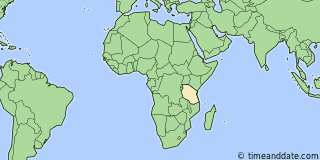
How to use your phone internationally without charges
Your unlocked GSM phone will work in Tanzania but international calls and data usage will be expensive using your foreign SIM card. We recommend turning off your mobile data, turning off automatic downloads and restricting app use in the background. You can also use airplane mode to avoid roaming charges but obviously you won't be able to send or receive text messages or phone calls.
Connect to a wi-fi network to use messaging apps like WhatsApp, Facetime, Messenger, Skype or Google Voice. You can use your other apps on the wi-fi network but you could also use some of your apps offline. For example you can pre-download maps on Google maps before leaving home.
You could also buy a local SIM card. The main mobile providers in Tanzania are Vodacom, Airtel and Tigo. Both of them work on Kilimanjaro but the signal is patchy. Vodacom has the widest coverage in the country and a SIM card is currently about 3000 Tzsh.
You can also buy a pre-paid international SIM card, for example TravelSIM which works in many countries and offers data as well. There are no costs for incoming calls or texts.
The Tanzania Country Code is +255.
Money and cash in Tanzania
ATMs are available in most popular areas and the official currency of Tanzania is the Tanzanian Shilling (TSH). US dollars are also widely accepted, so we would advise bringing cash dollars for your visa on arrival ($50) and for changing into local currency. Bring lower denomination notes and avoid damaged or very old notes
Credit cards are widely accepted, however there is usually a high service fee for using a credit card so do check about costs for paying bills or withdrawing cash from an ATM.
Charging Electronics in Tanzania
Tanzania uses plug types D and G. Type G plug is a standard UK plug, while the type D plug has three round pins. The voltage is 220-240V. Electricity is widely available in larger cities and urban areas throughout Tanzania. However, along trekking routes and in game reserves and national parks, there is no access to electricity except in the lodges. We advise that you bring a power pack for charging your phone, tablet or other items while on your holiday.


Type D Type G
What Language is Spoken in Tanzania?
The most widely spoken languages are Swahili and English; most Tanzanians speak Swahili between but in major tourist areas English is widely spoken. All of our guides speak English and you will be able to communicate very easily.
Is tipping usual in Tanzania?
Tipping in Tanzania is not expected but it is certainly appreciated. At restaurants as a general rule tip between 5% and 10%. On safaris and climbs of Kilimanjaro however, tipping is customary and we recommend a driver/guide and the cook to receive about $10 per day for a tip based on a full car load of visitors. On Kilimanjaro the rate would be USD$100.00 per guide and cook for a seven day trip, and $70.00 per porter, but please remember to provide this money in local currency.
Tipping on Kilimanjaro can be quite fraught, we have more information to explain how it works, but we strongly recommend against giving the cash to the guides before the end of the climb. Instead, gather the money in advance of the climb and change into local currency and hand it to Castro Kapela at the gate on your final day. He will manage the handing out of tips at the same time as paying the salaries.
Vegetarian and vegan diets in Tanzania
We can provide people with prefer a vegetarian diet and to some extent a vegan diet, but the range of products on sale in the shops is rather limited. Similarly there is not a wide range of gluten free products for celiacs or for people with specific food allergies.We therefore do recommend talking to us in advance and discussing about bringing some food items with you from home.
Excursions
Tanzania Excursions
Climbing Kilimanjaro
This is a classic mountain adventure to the top of the highest peak in Africa and one of the famed Seven Summits. We offer seven and eight day programmes with a full guiding service, managed by Castro Kapela who has been manager at Adventure Alternative Tanzania since 1996. All our guides have been employed by us for well over a decade and are a tribute to the company and our excellent safety track record.
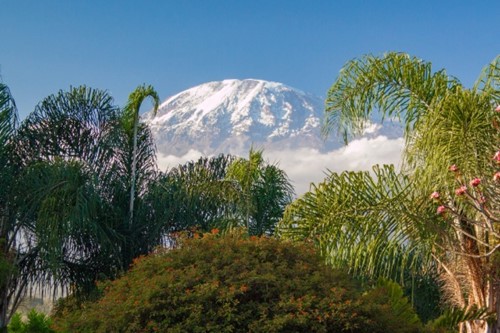
Mount Meru
This is a four day climb of the neighbour to Kilimanjaro which stands at 4566 metres.
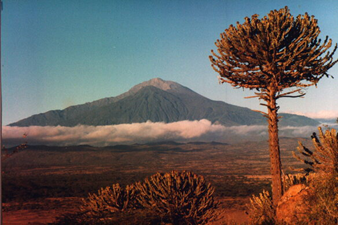
Ngorongoro Crater Safari
A four day safari which includes visiting the famous Ngorongoro Crater and also the other national parks of Tarangire and Lake Manyara. Accommodation either in a 4 star safari lodge or in a 3* lodge in the nearby town of Mto wa Mbu. This safari is particularly popular after a Kilimanjaro climb because the two together amount to a full two week vacation.
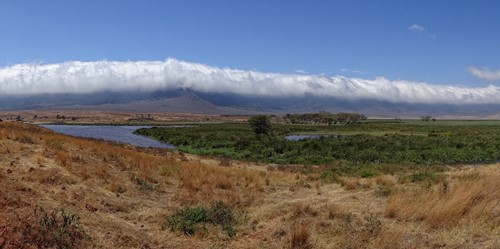
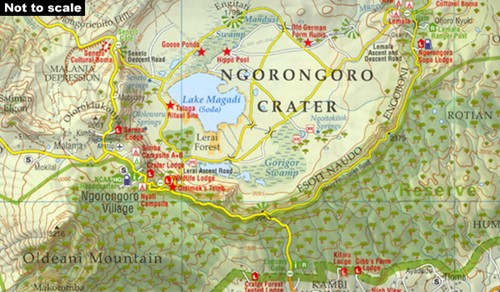
Serengeti Safari
A ten day safari to visit the parks of northern Tanzania with time spent in the vast plains of the Serengeti.
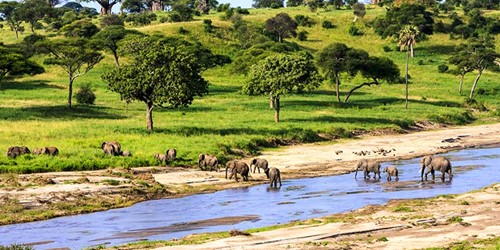
Oldonyo Lengai Climb
This is a day hike to climb a peak that is revered by the Maasai people, the words translate to Mountain of God. It is a steep climb which takes about six hours to the summit and almost the same amount of time back down again, but well worth it for the views and the challenge. However it is by no means to be underestimated.
The peak is 120kms northwest of Arusha in the Ngorongoro Highlands, south of Lake Natron in the Rift Valley. It's possible to combine this climb with your safari to the Ngorongoro Crater (it's possible to walk across the crater floor with permission) and to visit Lake Natron which is famous for a wide range of birdlife including flamingo and pelican. There is also a Maasai boma nearby where you can learn more about Maasai culture.
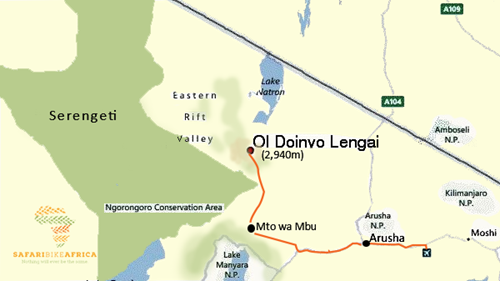
This is an active volcano and in the dark you can see lava down in the crater, and there are parts of the climb which are quite tricky with narrow paths, steep drops and some scrambling. It's important to be fit and be confident with your knees and feet on the descent.Don't leave too early otherwise you'll end up getting cold on the summit waiting for sunrise, and be aware that the descent on volcanic ash and dust is very slippery.
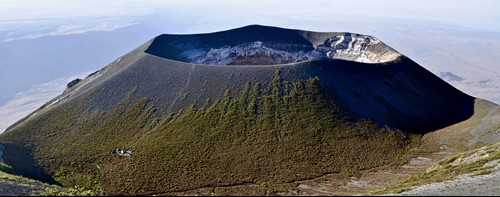
Don't forget a headtorch, jacket and gloves and warm clothes, drinks and snacks, suncream, trekking poles and good comfortable hiking boots. If you have come from Kilimanjaro then you should have all this equipment and clothing; whatever the case, don't underestimate this trek because it is much steeper than Kilimanjaro and has more exposed areas.
Contact us for a bespoke package which could include a safari and a visit to the lake.
Swahili
Tanzania Swahili basics
Swahili or Kiswahili is the national and official language of Tanzania. Swahili belongs to the greater Bantu language family that is widely spoken in East Africa as well as some parts of West Africa and Southern Africa.
Greetings - Salamu
• Hello, how are you? - Habari yako ?
• Am fine - Mzuri
• Goodbye - Kwa heri
• Nice to meet you = Nafurahi kukuona
• Goodnight - Lala salama
Communication - Mazungumzo
• Yes - Ndio
• No - Hapana /La
• Thank you - Asante
• Thank you very much - Asante sana
• Please - Tafadhali
• OK - Sawa
• Excuse me - Samahani
• You're Welcome - Karibu
• Can you help me? - Nisaidie Tafadhali
• What is your name? - Jina lako ni?
• My name is Lisa - Jina langu ni Lisa...
• Where are you from? - Unatoka wapi?
• I'm from London.. - Nimetoka London...
• May I take a picture? - Naweza piga picha
• Do you speak English? -Unaongea Kizungu?
• Just a little bit - Kidogo tu!
• How do you say Hallo in Swahili? = Unasemaje Hallo kwa Kiswahili
• I don't understand - Sifahamu
• Friend of mine -Rafiki yangu/Shoga yangu
• Me - Mimi
• You -wewe
• I am - Mimi ni
• Let’s go - Twende
• Ok - Sawa
• Enough - Tosha
Moving around...
• Where is the ... - ni wapi...
• Road - barabara
• Market -soko
• Toilet/bathroom - choo
• Plane - ndege
• Is there a bus going to Arusha...? - Kuna basi ya kuenda Arusha..?
• Is it far - Ni mbali
• Over there - pale
• Ticket - tikiti
• Where are you going? - Unaenda wapi?
• How much is it? -Ni pesa ngapi?
• Hotel - hoteli
• Room - chumba
• Are there any vacancies for tonight? -Kuna nafasi leo usiko?
• No vacancies - Hamna nafasi
• How much is it per night? - ni bei gani kwa usiku?
Time and Days - Wakati na Siku
• What is the time - ni saa ngapi?
• Today - leo
• Tomorrow - kesho
• Yesterday - jana
• Now - sasa
• Later - baadaye
• Every day - kila siku
• Monday - Jumatatu
• Tuesday - Jumanne
• Wednesday - Jumatano
• Thursday - Alhamisi
• Friday - Ijumaa
• Saturday - Jumamosi
• Sunday - Jumapili
Numbers - Hesabu
• 1 - moja
• 2 - mbili
• 3 - tatu
• 4 - nne
• 5 - tano
• 6 - sita
• 7 - saba
• 8 - nane
• 9 - tisa
• 10 - kumi
• 11 - kumi na moja (ten and one)
• 12 -kumi na mbili (ten and two)
• 20 - ishirini
• 21 - ishirni na moja (twenty and one)
• 30 - thelathini
• 40 - arobaini
• 50 - hamsini
• 60 - sitini
• 70 - sabini
• 80 - themanini
• 90 - tisini
• 100 - mia
• 200 -mia mbili
• 1000 - elfu
• 100,000 -laki moja
• 200,000 -laki mbili….
Food - Chakula
• Hot - moto
• Cold - baridi
• Water - maji
• Hot water - maji moto
• Cold water - maji baridi
• Drinking water - maji ya kunywa
• Soda (soft drinks) - soda
• Beer - bia
• Milk - maziwa
• Meat - nyama
• Chicken - kuku
• Fish - samaki
• Beef - nyama ya ng'ombe
• Fruit - matunda
• Vegetables - mboga
Health - Afya
• Doctor = daktari/mganga
• Hospital = hospitali
• I'm sick = mimi ni mgonjwa
• I need a doctor = nataka kuona daktari
• It hurts here = naumwa hapa ( hapa –point at where the pain is)
• Fever = homa
• Malaria = malaria
• I have a headache = naumwa na kichwa
• I have diarrhoea = naendesha
• Vomiting = tapika
• Medicine = dawa
Animals - Wanayama
• Animal = mnyama
• Buffalo = Nyati / Mbogo
• Cheetah = Duma / Chita
• Elephant = Tembo / Ndovu
• Giraffe = Twiga
• Hippo = Kiboko
• Hyena = Fisi
• Leopard = Chui
• Lion = Simba
• Rhino = Kifaru
• Warthog = Ngiri
• Wildebeest = Nyumbu
• Zebra = Punda milia


